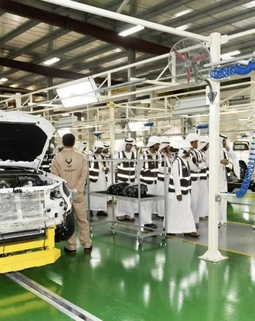Introduction
Cambodia's auto sector has emerged from the recent semiconductor crisis, showcasing signs of recovery and resilience. This article explores the current state of Cambodia's automotive industry, highlighting its rebound from the supply chain disruptions caused by the semiconductor shortage.
Overcoming Supply Chain Disruptions
Cambodia's auto sector has successfully navigated the supply chain disruptions caused by the semiconductor crisis. Despite the global shortage of semiconductors, the industry has displayed adaptability and resilience, finding alternative solutions to maintain production and meet consumer demand.
Growth in Domestic Production
The automotive industry in Cambodia has experienced growth in domestic production. Local manufacturers have increased their capacity and efficiency to meet the rising vehicle demand. This expansion has boosted the country's economic growth and created job opportunities, contributing to the sector's overall development.
Government Support and Incentives
The Cambodian government has extended support and incentives to the automotive industry, facilitating its recovery from the semiconductor crisis. These measures include tax incentives, streamlined regulations, and investment promotion schemes. Such support has encouraged local and foreign investors to explore opportunities within the sector, stimulating its growth.
Rising Consumer Demand
Despite the challenges posed by the semiconductor crisis, consumer demand for automobiles in Cambodia has remained resilient. Factors such as increasing disposable incomes, urbanization, and improving infrastructure have fueled the demand for personal vehicles. The industry has responded by offering various models and financing options to cater to diverse consumer preferences.
Future Prospects and Expansion
The automotive sector in Cambodia is poised for further expansion and market growth. The industry is expected to leverage technological advancements, such as electric vehicles and connected car technologies, to meet evolving consumer needs. Furthermore, ongoing efforts to improve infrastructure and address regulatory challenges will enhance the country's attractiveness for automotive investments.
Conclusion
Cambodia's auto sector has emerged from the semiconductor crisis, demonstrating its resilience and adaptability. With the government's support and incentives, domestic production growth, and sustained consumer demand, the industry is set to thrive in the coming years. By embracing emerging technologies and addressing key challenges, Cambodia's automotive sector is well-positioned for a prosperous future.





